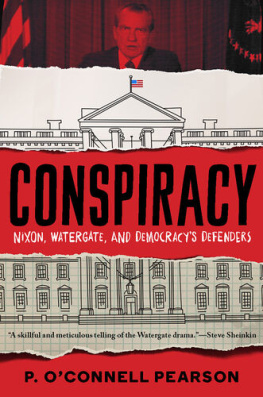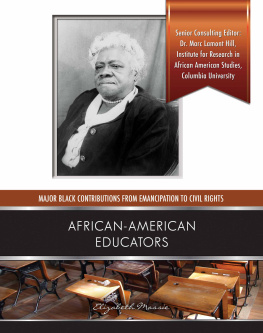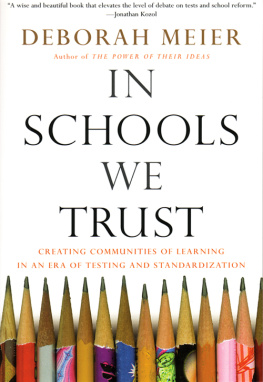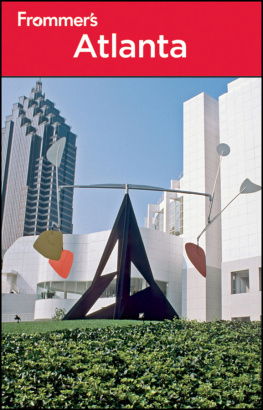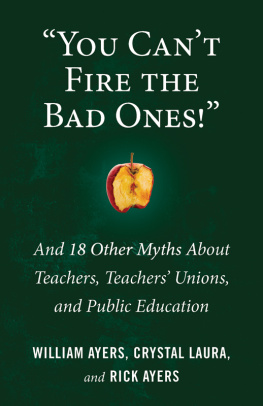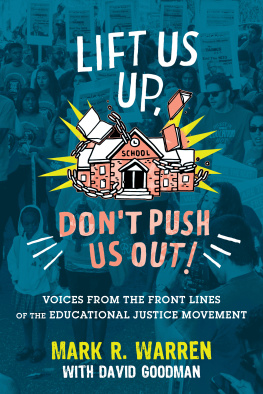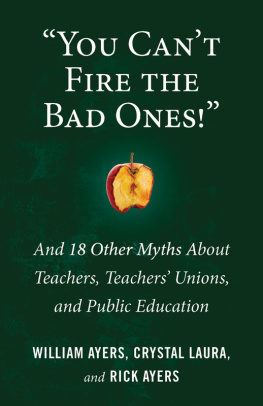Table of Contents
Pagebreaks of the print version
Guide

This book is dedicated to
my wonderful son, Amari

PROLOGUE
ON APRIL FOOLS DAY IN 2015, I found myself in an unthinkable position. I was a thirty-year-old Teach for America alum, former counselor, newlywed mom-to-be. And I was a convicted felon facing twenty-five years in prison for something I didnt do.
For two years I had lived under the shadow of RICO. Otherwise known as the Racketeer Influenced and Corrupt Organizations Act, RICO was designed in the 1970s to target the American Mafia. But in 2013, RICO was applied to an unlikely group: the educators of Atlanta Public Schools. Including me.
At issue were the districts scores on a Georgia standardized test called the Criterion-Referenced Competency Test, or CRCT. In 2008, the Atlanta Journal-Constitution investigated suspiciously high score increases on CRCT retests in several school districts, including Atlanta. This prompted a state agency to conduct an audit of CRCT scores in 2009, analyzing the number of wrong-to-right erasures on students test booklets and finding a high likelihood that cheating had occurred in dozens of school districts across the state.
Governor Sonny Perdue eventually ordered a special investigation to probe Atlanta and one other school district. When the dust settled, thirty-five employees of Atlanta Public Schools were indicted on RICO charges. All but one were black. Some faced prison terms of up to forty years.
I never cheated. My first graders test scores didnt even count toward adequate yearly progress, a set of benchmarks that the federal government required schools to meet under the No Child Left Behind Act. Nor did the scores count toward targets, another set of benchmarks imposed by the Atlanta Public Schools administration and board.
But Perdues investigation was conducted like a witch hunt, or, as one attorney would later characterize it, Shoot first and whatever you hit, call it the target. Investigators used threats to get teachers to talk and offered immunity deals to those who told the truth. That often meant dragging educators in for multiple rounds of questioning until their stories changed to reflect what investigators believed the truth to be. This approach produced false accusations against two of my colleagues, me, and probably many more people.
The trial that followedthe longest and most expensive in Georgia historywas a tragedy for Atlanta Public Schools, which had long served a majority-black student body under majority-black leadership in a city known as the Black Mecca, a place where black folks have thrived economically, politically, and culturally in spite of bitter oppression.
It was a personal tragedy too, as I came from a family of teachers and social justice activists whose legacy I made it my lifes work to build upon.
Growing up, I was always known as a good girl. It was what my mom, Beverly Robinson, expected of me because of the way she had been raised. Her mother, Dorothy, worked as a salad maker in the cafeteria at Peabody Collegewhich later merged with Vanderbilt Universityin Nashville, Tennessee. Dorothy raised my mother and her three sisters as a single parent with the income from her cafeteria job. They lived with Dorothys sisters and their childrenten people in a two-bedroom apartment. Dorothy did the best she could with what she had, and she filled the household with a lot of love and laughter.
As a single parent, Dorothy was wary of the societal stigma surrounding her life. I dont want any attention called to us, she often told her children. They had to act right, plus some. But she encouraged them too. She valued education and praised them for doing well in school. My mother raised me to care about education and respect, just like Dorothy taught her.
On my dads side, I was instilled with a social and political consciousness. My dad, Jessie Robinson, was a big proponent of learning about African and African American history. He was mentored by a renowned black scholar, writer, and activist, Yosef Ben-Jochannan, who taught and inspired some of todays foremost black intellectuals. You have to know where you come from to know where youre going, he often told me. Thats the meaning of the Ghanian word sankofa, which is symbolized by a bird looking backward or by a swirling heart. I have a tattoo of the sankofa heart on my right ankle.
My parents met in college and married in the 1980s. They moved to Decatur, a small city on the eastern edge of Atlanta, buying a home in an area that was predominantly black. Ours was the neighborhood house. On any given day, seven or so kids would come over to play games with my brother, Jamal, and me. My mom would cook huge meals to feed us all. Then she would sit us down to do our homework and tutor us in reading and math.
Like many of the women in my family, my mother was a teacher. Her first teaching job in Georgia was in a town that was mostly white, Stone Mountain. The town was named for a huge mound of granite that had a sordid past. It was on top of Stone Mountain that the Ku Klux Klan was revived in 1915. Throughout the twentieth century, the Klan held rallies and cross-burnings there.
Jamal and I attended Stone Mountain Elementary, where our mother taught. Getting in trouble was not an option, and we were expected to do our best to get straight As. When I was in sixth grade, I became the first black girl at Stone Mountain Elementary to win a Daughters of the American Revolution award.
By the time I reached junior high, more black people were moving to Stone Mountain. My parents talked about moving there to be nearer our school. Our neighborhood in Decatur was having problems with drugs and crime. Sometimes we heard gunshots nearby. One time, a pregnant neighbor escaped a burglar and fled to our house. That was the last straw for my parentstheir plan to move solidified.
When I first saw it, I couldnt believe the two-story white house with antebellum columns could become ours. At our old house, my brother and I shared a bedroom, but there we would have our own rooms, plus a family room and basement to play in. Down the road was a clubhouse with a pool. The neighborhood seemed so perfect that I couldnt understand why so many houses had for sale signs in their yards.
Its called white flight, my mom explained. Thats when black people move into a white neighborhood, but the white people dont want to live with the black people, so they move out as fast as they can. Its like birds that flock together. When one takes off they all follow.
We moved into our dream house, and as high school approached I enrolled in the Majority-to-Minority program, or M-to-M. In an effort to desegregate schools, the program allowed kids to transfer from a school where they were a racial majority to one where they were the minority. During my freshman year, my friends and I attended high schools that werent zoned for our neighborhood. We all caught the same school bus at six in the morning and rode it to a central location that we called the shuttle. When all the buses arrived, everyone switched to the bus going to their respective school. There were hundreds of black kids going to the white schoolsbut where were the white kids going to the black schools? I didnt see many of them.


